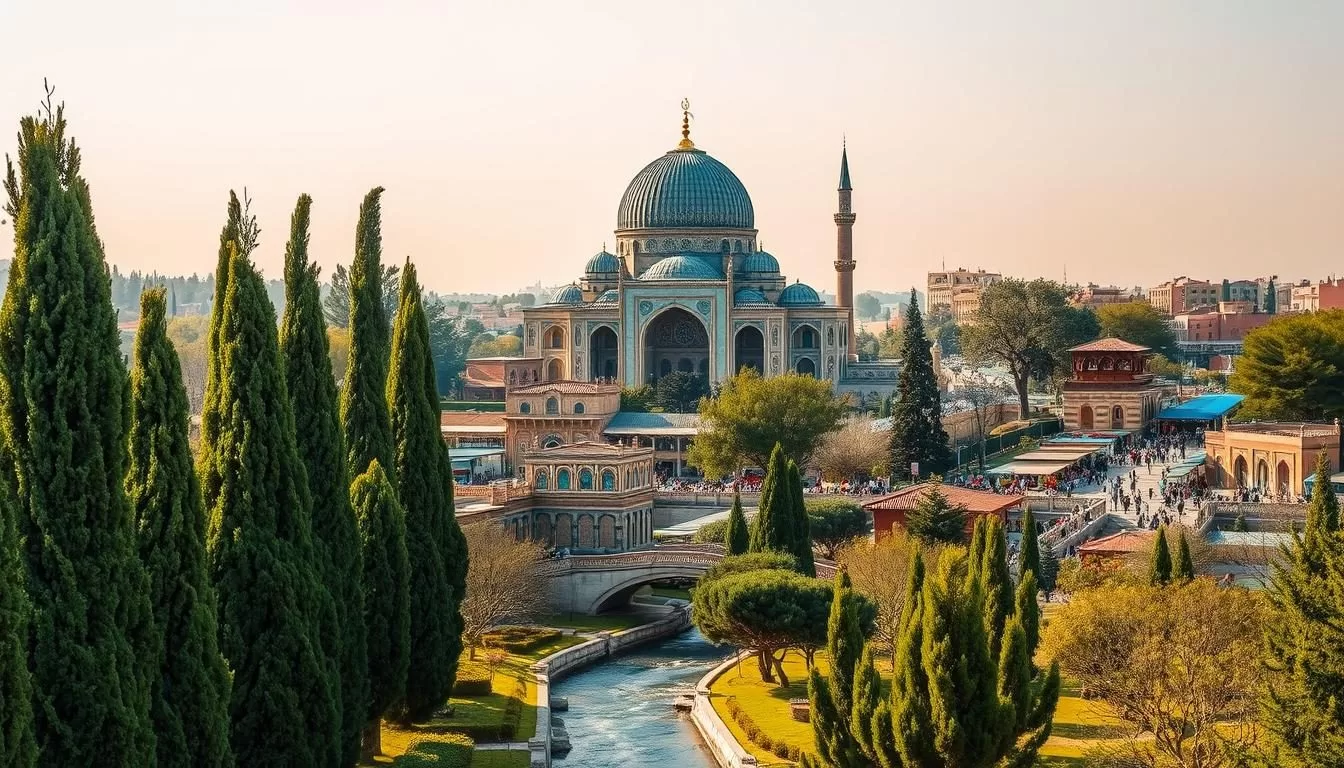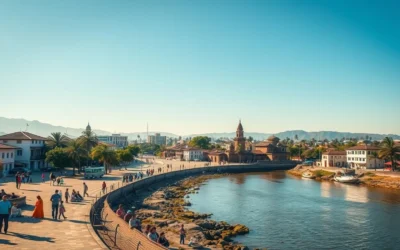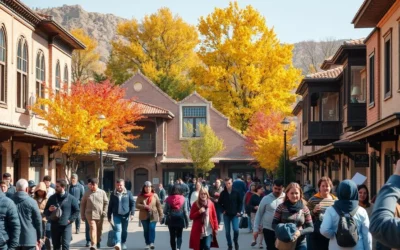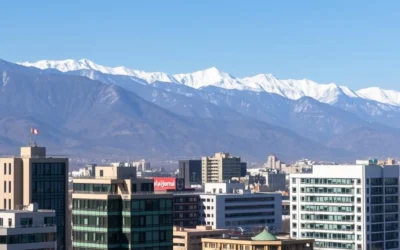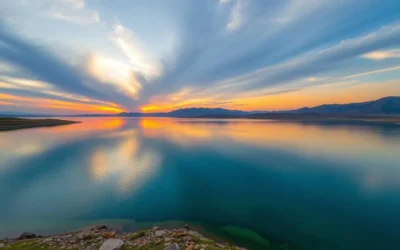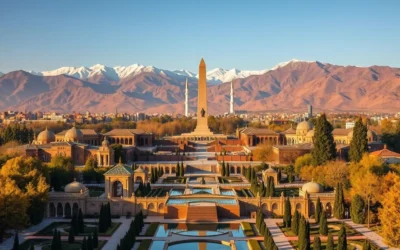✓ Accommodations✓ Flights✓ Rental Cars
Welcome to Isfahan, a magical city often referred to as the “Pearl of Iran.” This vibrant place is a blend of ancient charm and modern energy, making it a top destination for travelers. Known as “half the world,” it’s a city that truly lives up to its reputation with its stunning architecture and rich history.
Isfahan is home to two UNESCO World Heritage Sites, including the breathtaking Naghsh-e Jahan Square, the second-largest square in the world. From sprawling bazaars to majestic mosques, this city offers a treasure trove of experiences. Whether you’re exploring the Shah Mosque or strolling across the iconic Khajou Bridge, every corner tells a story.
This article is your ultimate list of must-see attractions and insider tips. Discover the heart of Isfahan’s cultural center and plan your visit with confidence. Let’s dive into the wonders of this enchanting city and make your journey unforgettable.
Discover the Enchantment of Isfahan
Step into a world where history and modernity blend seamlessly. This city invites you to explore its enchanting streets and immerse yourself in its welcoming culture. From timeless attractions to vibrant local life, every moment here is unforgettable.
Whether you’re a first-time tourist or a seasoned traveler, the city offers a unique experience at every turn. Its blend of historical landmarks and modern vibes ensures there’s something for everyone. Plan your tour to include both iconic spots and hidden gems for a well-rounded adventure.
“Isfahan is a place where every corner tells a story, and every visit feels like a new discovery.”
The best time to visit is from April to June or August to October, when the weather is ideal for exploring. During these months, you can enjoy stunning views of the city’s architectural wonders and vibrant bazaars.
| Activity | Highlights |
|---|---|
| Historical Tours | Explore UNESCO World Heritage sites like Naqsh-e Jahan Square. |
| Cultural Experiences | Engage with local communities and discover traditional handicrafts. |
| Scenic Walks | Stroll across iconic bridges and enjoy breathtaking cityscapes. |
Every visit to this city offers a fresh perspective. Whether you’re marveling at its grand architecture or savoring its local flavors, Isfahan promises an unforgettable journey.
Marvel at Naqsh-e Jahan Square and Its Wonders
Experience the awe-inspiring beauty of Naqsh-e Jahan Square, a UNESCO World Heritage Site. This iconic place is one of the largest public squares in the world, spanning close to 90,000 square meters. Built during the reign of Shah Abbas I in 1598, it reflects the grandeur of Safavid-era architecture and Persian design.
Historic Monuments and Grand Architecture
The square is surrounded by four monumental structures, each a masterpiece in its own right. The Imam Mosque, considered the most significant Islamic structure in the region, showcases intricate tilework and grand domes. The Sheikh Lotfollah Mosque, built as a private royal mosque, stands out for its unique design without minarets.
On the western side, the Ali Qapu Palace rises six stories high, each floor adorned with stunning art and design elements. The Qeysarieh Gate leads to a bustling bazaar, offering a glimpse into the commercial vibrancy of the Safavid era.
Cultural Significance and Must-See Landmarks
Naqsh-e Jahan Square is not just a historical site; it’s a living cultural hub. For centuries, it has been a gathering place for locals and visitors alike. Traditional events, festivals, and markets often take place here, adding to its vibrant atmosphere.
Visiting this UNESCO World Heritage Site allows you to immerse yourself in authentic Persian history and artistry. From the grand mosques to the lively bazaars, every corner tells a story of a bygone era.
Explore Isfahan’s Architectural Gems
Uncover the architectural wonders that define this historic city. From grand mosques to regal palaces, each structure tells a story of artistry and cultural significance. These landmarks are not just buildings; they are testaments to a glorious past.
Shah Mosque & Sheikh Lotfollah Mosque
The Shah Mosque is a masterpiece of Persian architecture. Its intricate tilework and grand domes showcase the craftsmanship of the Safavid era. Every detail reflects the artistry of the 17th century, making it a must-see attraction.
Nearby, the Sheikh Lotfollah Mosque stands out for its unique design. Unlike other mosques, it lacks minarets, focusing instead on its stunning dome. This intimate structure was built for royalty, adding to its historical charm.
Ali Qapu Palace: A Regal Experience
The Ali Qapu Palace offers a glimpse into royal life. This six-story palace features breathtaking art and design elements. From its terrace, you can enjoy panoramic views of the surrounding square.
Built during the Safavid dynasty, the palace served as a hub for cultural and political activities. Its rich history and architectural beauty make it a highlight of any visit.
These architectural gems provide a deep dive into the art and culture of the Safavid era. Whether you’re marveling at the mosques or exploring the palace, each site leaves a lasting impression.
Dive into Bustling Bazaars and Traditional Markets
Step into the vibrant heart of traditional commerce and culture. The bazaar is more than just a marketplace; it’s a living testament to centuries of trade and craftsmanship. Here, you’ll find a maze of alleys filled with colorful textiles, aromatic spices, and handcrafted treasures.
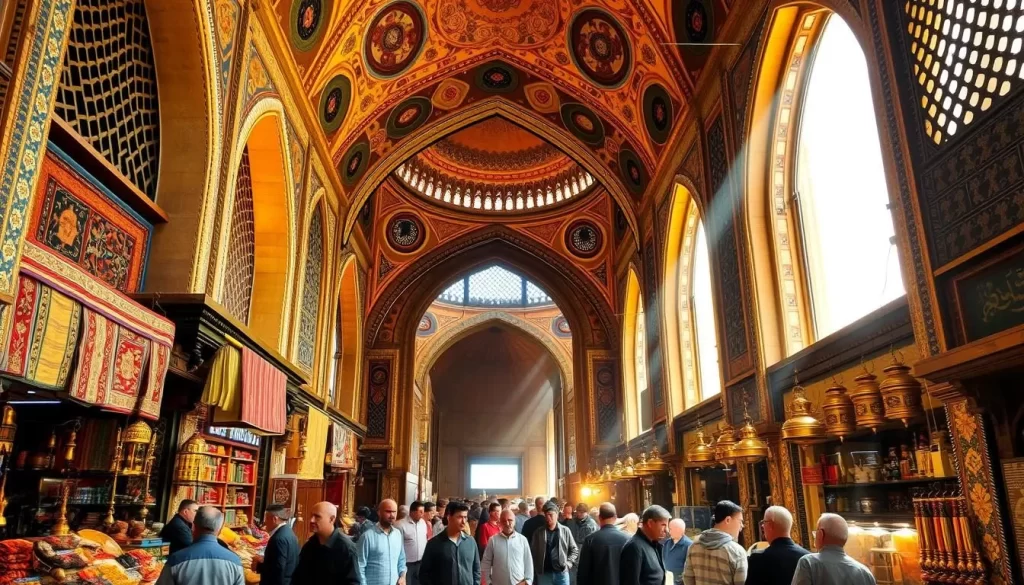
Gheysarieh Bazaar: A Sensory Overload
Gheysarieh Bazaar is a place where history comes alive. Dating back to the Safavid Dynasty, this bustling hub is located near Naqsh-e Jahan Square. As you walk through its corridors, you’ll be greeted by the scents of saffron, rosewater, and freshly baked bread.
Every corner of this bazaar offers something unique. From intricate Persian carpets to delicate pottery, the variety is endless. It’s like a mini tour of the city’s storied past, where each stall tells a story.
Tips for Authentic Shopping Experiences
To make the most of your visit, start your day early when the market is less crowded. Engage with local vendors; they’re often happy to share stories about their crafts. Don’t hesitate to bargain—it’s part of the experience.
Look for hidden gems in smaller stalls. These places often offer the most authentic and unique items. Take your time to explore, and let the sensory overload guide you to unforgettable finds.
Enjoy Scenic Bridges and City Walks
Discover the charm of scenic bridges that span the Zayandeh River. These architectural marvels are not just functional but also stunning works of art. A leisurely walk across them offers breathtaking views and a glimpse into the city’s rich history.
Si-o-se-pol Bridge: An Architectural Icon
The Si-o-se-pol Bridge is a masterpiece of Persian engineering. With 33 arches, it’s the largest of the 11 bridges over the Zayandeh River. Built during the Safavid era, it showcases intricate design and craftsmanship. A walk here during the day lets you admire its grandeur and the flowing water below.
Khaju Bridge: A Nighttime Delight
Khaju Bridge, built around 1650, is a nighttime gem. Its 23 arches and illuminated design create a magical ambiance. Join locals who gather here to enjoy the serene atmosphere and stunning reflections on the river. It’s a perfect spot to end your day with a peaceful stroll.
These bridges are more than just crossings; they’re symbols of history and beauty. Whether you’re admiring their design or soaking in the views, they offer an unforgettable experience. Take your time, enjoy the scenery, and immerse yourself in the charm of these iconic structures.
Immerse Yourself in Religious and Cultural Heritage
Dive into the rich tapestry of religious and cultural heritage that defines this city. From ancient mosques to vibrant ethnic quarters, every corner tells a story of faith, art, and community. This journey offers a profound understanding of the region’s multi-faith legacy.
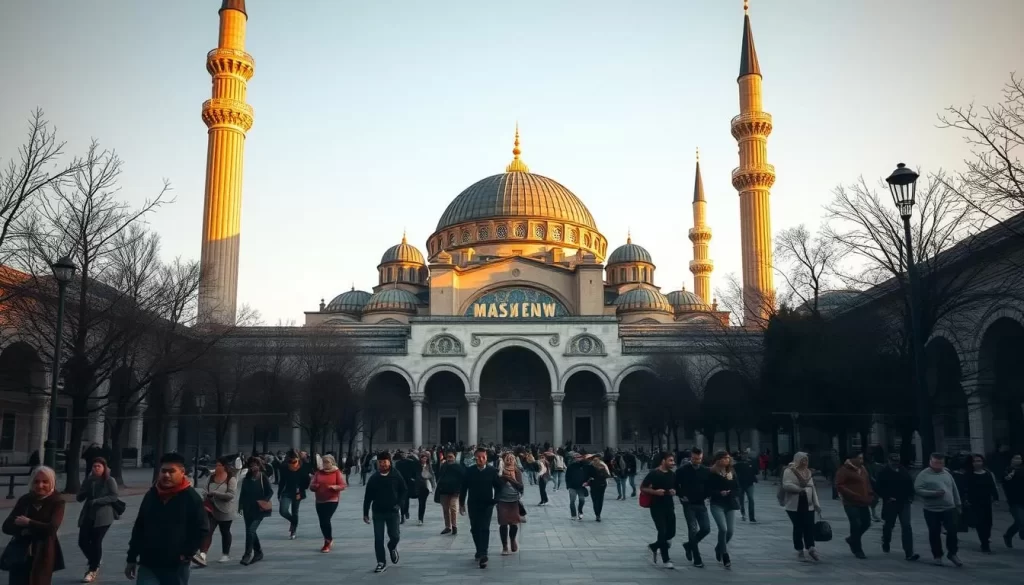
Jameh Mosque and Historical Landmarks
The Jameh Mosque is one of the oldest religious complexes in the region, showcasing architecture influenced by various historical periods. Its evolution over centuries reflects the city’s deep connection to faith and artistry. Walking through its halls, you’ll witness the blend of Islamic and Persian design elements.
This site is not just a place of worship; it’s a living testament to the city’s enduring spiritual and cultural identity. Every arch and tile tells a story of over a millennium of history.
Exploring Armenia and Jewish Quarters
The Armenian and Jewish quarters add another layer to the city’s cultural mosaic. These neighborhoods are home to historic churches, synagogues, and vibrant communities. The Vank Cathedral, for example, is a significant symbol of the Armenian community, adorned with oil paintings and gold decorations.
Strolling through these quarters, you’ll encounter traditions that have been preserved for generations. Engaging with locals offers a glimpse into the lives of the people who have shaped this city’s diverse heritage.
| Site | Highlights |
|---|---|
| Jameh Mosque | One of the oldest religious complexes, showcasing diverse architectural styles. |
| Vank Cathedral | Adorned with intricate oil paintings and gold decorations. |
| Jewish Quarter | Home to historic synagogues and vibrant cultural traditions. |
Visiting these sites allows you to connect with the local culture on a deeper level. Whether you’re marveling at the Jameh Mosque or exploring the Armenian Quarter, every experience enriches your understanding of this city’s heritage. For more insights, check out this guide to Isfahan’s cultural highlights.
Savor Authentic Persian Cuisine and Local Flavors
Embark on a culinary journey through the heart of Persian flavors. This place offers a rich tapestry of dishes that reflect centuries of tradition and culture. From aromatic stews to succulent kebabs, every bite tells a story.
Traditional Dishes You Must Try
Persian cuisine is a celebration of fresh ingredients and bold flavors. Start with Khoresht-e Ghormeh Sabzi, a herb stew often cooked with lamb and kidney beans. It’s a staple that many locals enjoy weekly.
Another must-try is Joojeh Kebab, a marinated chicken dish infused with saffron and yogurt. It’s perfect for outdoor gatherings and picnics. Don’t forget Tahdig, the crispy rice layer that’s a favorite accompaniment to many meals.
For a sweet and sour treat, try Albaloo Polo, a rice dish made with sour cherries. It’s particularly famous in certain regions and often served at celebrations.
Local Dining Hotspots for Culinary Exploration
To truly savor Persian cuisine, visit local dining hotspots. Khan Gostar is a popular choice, known for its generous portions and traditional recipes. For a modern twist, head to Zarrin Restaurant, where you can enjoy panoramic views of the city while dining.
If you’re looking for a cozy place, Café Firouz offers a mix of Persian and Western dishes at affordable prices. For a unique experience, try Khatun Vegan Restaurant, which serves vegan versions of traditional Persian dishes.
| Dish | Description |
|---|---|
| Khoresht-e Ghormeh Sabzi | A herb stew with lamb and kidney beans, often cooked weekly. |
| Joojeh Kebab | Marinated chicken infused with saffron and yogurt, perfect for gatherings. |
| Albaloo Polo | A sweet and sour rice dish made with sour cherries, popular at celebrations. |
Exploring Persian food is more than just a meal; it’s a cultural immersion. Whether you’re dining at a traditional eatery or a modern café, the flavors will leave a lasting impression. For more insights, check out this guide to Persian cuisine.
Where to Stay: Top Accommodations in Isfahan
Finding the perfect place to stay can make or break your trip. Whether you’re looking for luxury or budget-friendly options, the city offers a variety of accommodations to suit every traveler’s needs. From historical hotels to modern stays, your choice can enhance your overall experience.
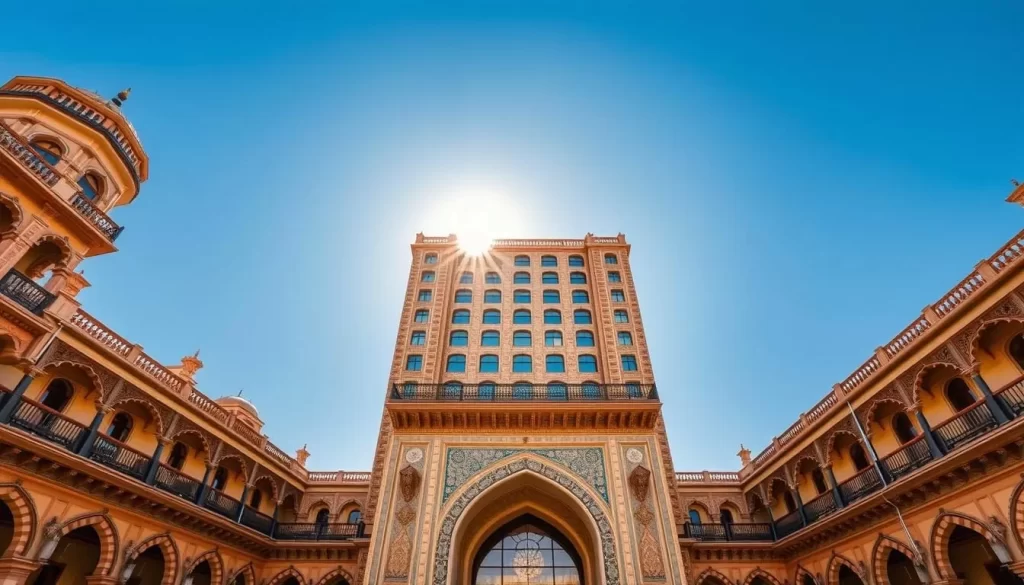
For a luxurious stay, consider the Abbasi Hotel, one of the oldest hotels in the world. Built in 1106 A.D., it features stunning architecture and a variety of room types, including Qajar and Safavi suites. Another top choice is the Parsian Kowsar Hotel, a 5-star property with 192 fully equipped rooms and royal suites.
If you’re on a budget, the Mahbibi Hostel is a popular option among backpackers. Its central location and friendly atmosphere make it a great base for exploring the city. For a more traditional experience, the Tolou-e Khorshid Hotel offers 12 rooms designed to reflect authentic Iranian culture.
Choosing the right hotel can significantly impact your trip. Look for accommodations that offer easy access to major attractions like Naqsh-e Jahan Square and the Sheikh Lotfollah Mosque. Many hotels also provide amenities like free Wi-Fi, fitness centers, and restaurants, ensuring a comfortable stay.
For a truly unique experience, consider staying at a historical hotel or a boutique guesthouse. These options not only provide comfort but also immerse you in the city’s rich heritage. To make the most of your visit, book early and check reviews to ensure your chosen place meets your expectations.
For more tips on selecting the perfect accommodation, check out this guide to choosing hotels in Isfahan.
Your Ultimate Guide: Isfahan, Iran: Best Things to Do – Top Picks
Planning your visit to this historic city can be both exciting and overwhelming. With so many unmissable highlights, it’s essential to create a balanced itinerary that covers the best of what the city has to offer. Whether you’re here for a short stay or an extended trip, this guide will help you make the most of your time.
Crafting Your Perfect Itinerary
Start your tour with a visit to Naqsh-e Jahan Square, a UNESCO World Heritage Site that showcases the grandeur of Safavid-era architecture. Spend the morning exploring the Sheikh Lotfollah Mosque and the Ali Qapu Palace, both of which are architectural marvels.
In the afternoon, head to the bustling bazaars for a taste of local life. Don’t forget to include time for a leisurely walk across the iconic Si-o-se-pol Bridge, built in the 17th century. End your day with a visit to the Jameh Mosque, where you can immerse yourself in the city’s rich history.
Insider Tips for Maximizing Your Visit
To avoid crowds, visit popular attractions like the Sheikh Lotfollah Mosque early in the morning or late in the afternoon. Spring and fall are the best times to visit, offering pleasant weather and fewer tourists.
Customize your tour based on your interests. If you’re an art enthusiast, include a visit to the Isfahan Contemporary Art Gallery. For a deeper dive into history, explore the Armenian and Jewish quarters.
Public transport is efficient, but walking is the best way to soak in the city’s charm. Use this guide to navigate the city like a local and fully absorb its culture.
Getting Around: Transportation and Travel Tips
Navigating this historic city is a breeze with its well-connected transportation options. Whether you’re arriving by air, bus, or train, getting to and around the city is straightforward. Once here, you’ll find it easy to explore its iconic bridges, lush gardens, and stunning mosques.
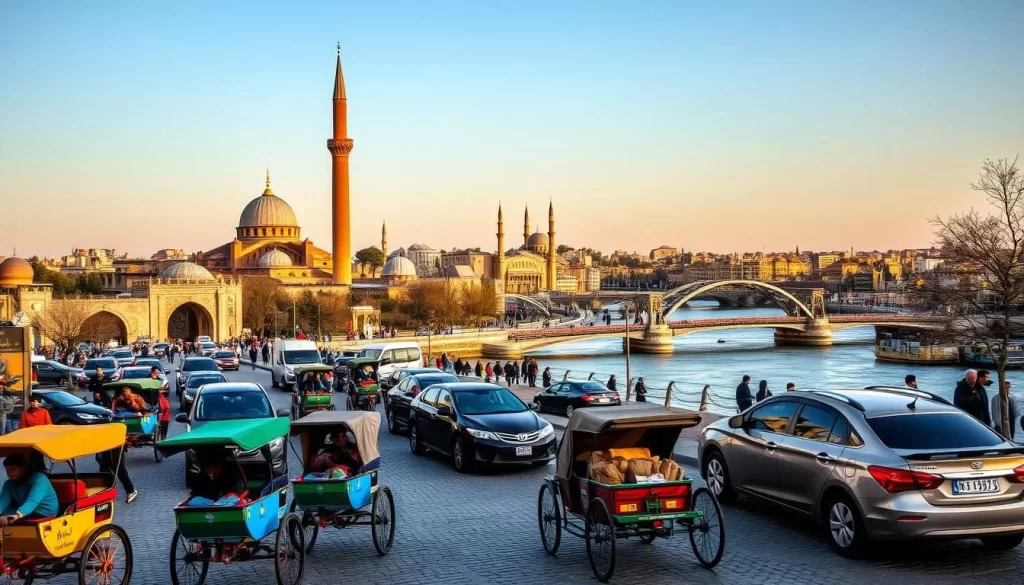
Air, Bus, and Train Options
Isfahan International Airport offers flights to 14 destinations in 5 countries, making it a convenient entry point. Turkish Airlines provides daily flights, ensuring smooth connections from abroad. For those traveling domestically, buses and trains are reliable options. However, during peak travel seasons like Nowruz, tickets sell out months in advance.
Trains are a comfortable way to reach the city, but booking early is advised due to high demand. Buses are also widely available, connecting Isfahan to major cities across the region. Both options offer a chance to enjoy the scenic views along the way.
Local Tips for Navigating the City
Once in the city, taxis and buses are the primary modes of local transport. However, traffic in the center can be slow, so plan your time accordingly. Walking is often the best way to explore, especially around attractions like the UNESCO World Heritage Sites and the Zayandeh River.
For a seamless experience, consider hiring a local guide. They can help you navigate the bustling streets and share insights about the city’s history. Additionally, early mornings or late afternoons are ideal for visiting popular sites to avoid crowds.
“Exploring this city is like stepping into a living museum, where every corner tells a story.”
| Transport Option | Highlights |
|---|---|
| Air | Convenient international and domestic flights. |
| Bus | Affordable and connects to major cities. |
| Train | Comfortable and scenic, but book early. |
| Local Taxis | Flexible but can be slow in the city center. |
For more detailed travel tips, check out this guide to navigating Iran. With these insights, you’ll be well-prepared to explore the wonders of this enchanting place.
Conclusion
Your journey through this enchanting city promises a blend of cultural richness and historical marvels. From the grandeur of Naqsh-e Jahan Square to the serene beauty of its iconic bridges, every attraction tells a story of artistry and heritage. The vibrant bazaars and ancient mosques offer a glimpse into centuries of tradition, making each day an adventure.
This guide provides a comprehensive plan to help you explore the city’s highlights. Whether you’re marveling at architectural wonders or savoring local flavors, every experience adds depth to your visit. Use this resource to craft an itinerary that suits your interests and ensures a memorable trip.
Embrace the city’s charm and let its history inspire you. For more travel insights, check out this guide to planning your visit. Return to this guide as you explore, and let it enhance your journey every step of the way.
The above is subject to change.
Check back often to TRAVEL.COM for the latest travel tips and deals.
